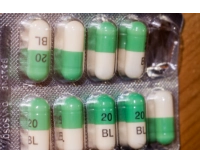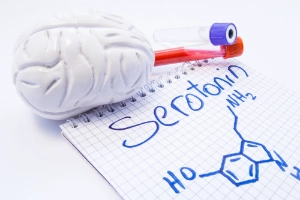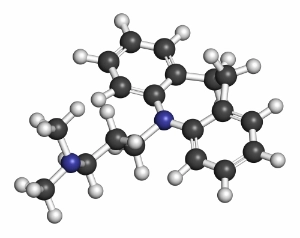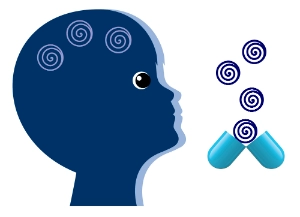The mix of antidepressants and marijuana can lead to complications such as tachycardia, panic attacks, and even hallucinations. Are these risks something that you are aware of?
In the United States, about 11% of Americans that are the age of 12 and over now take an antidepressant of some sort. Additionally, more than 22 million people have reportedly used marijuana during the last month. Studies forsee marijuana use being on the rise as more states begin to legalize the drug.
Unfortunately, many people don’t understand how the two drugs interact. Nor do they understand the associated risks of combining them. Don’t worry, we’ve compiled a thorough guide to mixing antidepressants and marijuana.
Here’s everything you need to know. Let’s start by considering the nature of both, and why they’re often used together.
Mixing Antidepressants & Marijuana
Antidepressants balance the brain chemicals (neurotransmitters) that affect your emotions. Their use can help to improve your mood, sleep, appetite, and concentration.
Alone, antidepressants aren’t as addictive as other substances, such as alcohol or opioids. But users can still develop a physical dependence on them. In fact, the idea that prescription medications can’t cause problems is one of the biggest myths of addiction.
Antidepressants help many people to cope with their symptoms. Marijuana is another substance that has the potential to cause abuse problems, but can also be beneficial in some instances. In fact, many find that marijuana helps them feel less stressed.
Depression itself is often associated with increased life stressors. So it’s no surprise that people taking antidepressants are 8x more likely to also use cannabis.
As so many mix antidepressants with marijuana, it may be assumed that there is little harm in this practice. Unfortunately, that’s not the case…
Mixing Marijuana with Antidepressants Research
There is surprisingly little research that has examined how marijuana and antidepressants interact.
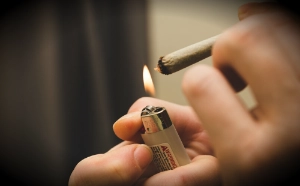
Perhaps it’s down to the range of antidepressants. There are several different forms, and each interacts with marijuana differently.
Here we’ll consider each in turn. Let’s start with SSRIs.
SSRIs & Marijuana
Selective serotonin reuptake inhibitors (SSRIs) are the most prescribed type of antidepressant. Examples of SSRIs include:
- Citalopram (Cipramil)
- Fluoxetine (Prozac)
- Fluvoxamine (Luvox)
- Sertraline (Zoloft)
- Paroxetine (Aropax)
Typically SSRIs are associated with low rate of side effects. Yet, there are anecdotal reports of users experiencing severe panic attacks after mixing them with marijuana.
SNRIs & Marijuana
Serotonin-norepinephrine reuptake inhibitors (SNRIs) are a newer class of anti-depressants. Examples of SNRIs include:
- Desvenlafaxine (Pristiq)
- Duloxetine (Cymbalta)
- Levomilnacipran (Fetzima)
- Venlafaxine (Effexor)
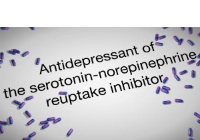
Still, as these antidepressants are much newer, there is much less published research to evaluate them. It’s not advised to mix marijuana with SNRIs, due to this uncertainty.
TCAs & Marijuana
Tricyclic antidepressants (TCAs) are another form of antidepressant. Examples of TCAs include:
- Amitriptyline (Tryptanol)
- Imipramine (Tofranil)
- Dosulepin (Prothiaden)
- Nortriptyline (Allegron)
- Clomipramine (Anafranil)
Marijuana has been shown to interact negatively with tricyclic antidepressants. In fact, several case studies have shown that mixing both can result in delirium and tachycardia (an abnormally fast heartbeat).
Other noted side effects include:
- high blood pressure
- mood swings
- hallucinations
Because of this, it’s strongly advised that you do not take marijuana if currently using TCA antidepressants.
MAOIs & Marijuana
Monoamine oxidase inhibitors (MAOIs) are the original antidepressants. Nowadays, they are prescribed quite infrequently. Examples of MAOIs include:
- Phenelzine (Nardil)
- Tranylcypromine (Parnate)
- Moclobemide (Aurorix)

As such, MAOI users are discouraged from also taking marijuana.
Sedatives & Marijuana
Sedatives are not actually antidepressants. But, as they are commonly prescribed to those experiencing depression, it’s relevant to mention them here.
Examples of sedatives include:
- Lonazepam (Klonopin)
- Lorazepam (Ativan)
- Phenobarbital (Donnatal)
- Zolpidem (Ambien)
Both marijuana and sedatives are known to cause drowsiness. As such, mixing both is likely to amplify the effect. This can have implications for day-to-day safety, including driving and operating machinery.
Absorption & Adherence of Mixing Marijuana with Antidepressants
Even in cases where antidepressants appear to be low risk, there are other factors to consider.
For example, the use of marijuana can affect absorption rates. This means marijuana has the potential to make antidepressants less effective. It is also possible that those using marijuana are less likely to adhere to the prescribed antidepressant dosage, because of this.
For patients experiencing significant depression, the potential impact could be life-threatening.
Dosage
Mixing antidepressants and marijuana also make it hard for a doctor to give accurate dosage prescriptions. For users, it can also be difficult to understand the true impact of antidepressants, when used alongside marijuana.
If you wish to begin taking antidepressants you should, at the least, temporarily abstain from taking marijuana. If you’re able to first determine a sufficient dosage of antidepressants, you’re less likely to meet complications.
Individual Differences
As with all medications, individual (genetic) differences can play a big role. Mixing antidepressants and marijuana might be relatively safe for some, but disastrous for others.
The best option is to talk to your doctor about mixing antidepressants and marijuana. That way adverse health effects can be mitigated wherever possible.
If you’re taking antidepressants, it’s very important that your doctor is aware of your cannabis use.
Getting Help
Used alone, antidepressants and marijuana both carry their own risks. But when combined, you face the potential of added health complications.
This is particularly risky for users mixing marijuana with higher risk antidepressant types, such as TCAs and MAOIs.
Is someone you know struggling with drug addiction?
If so, and you’re searching for a way to help, consider our drug & alcohol detox program, which can help users limit withdrawal symptoms.

